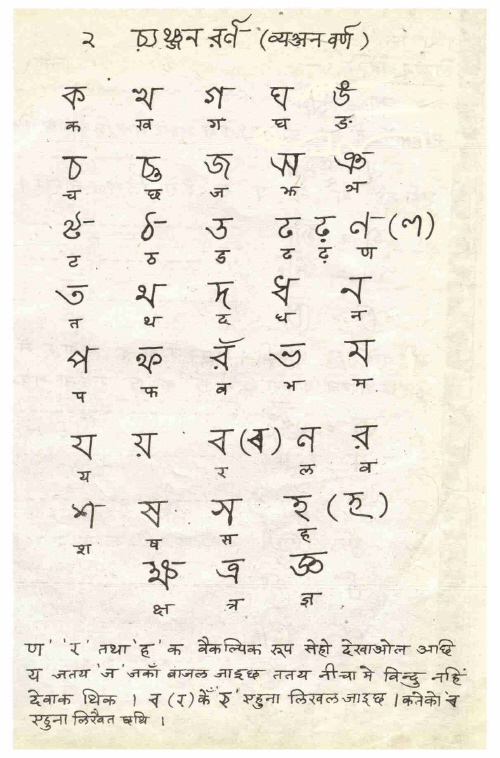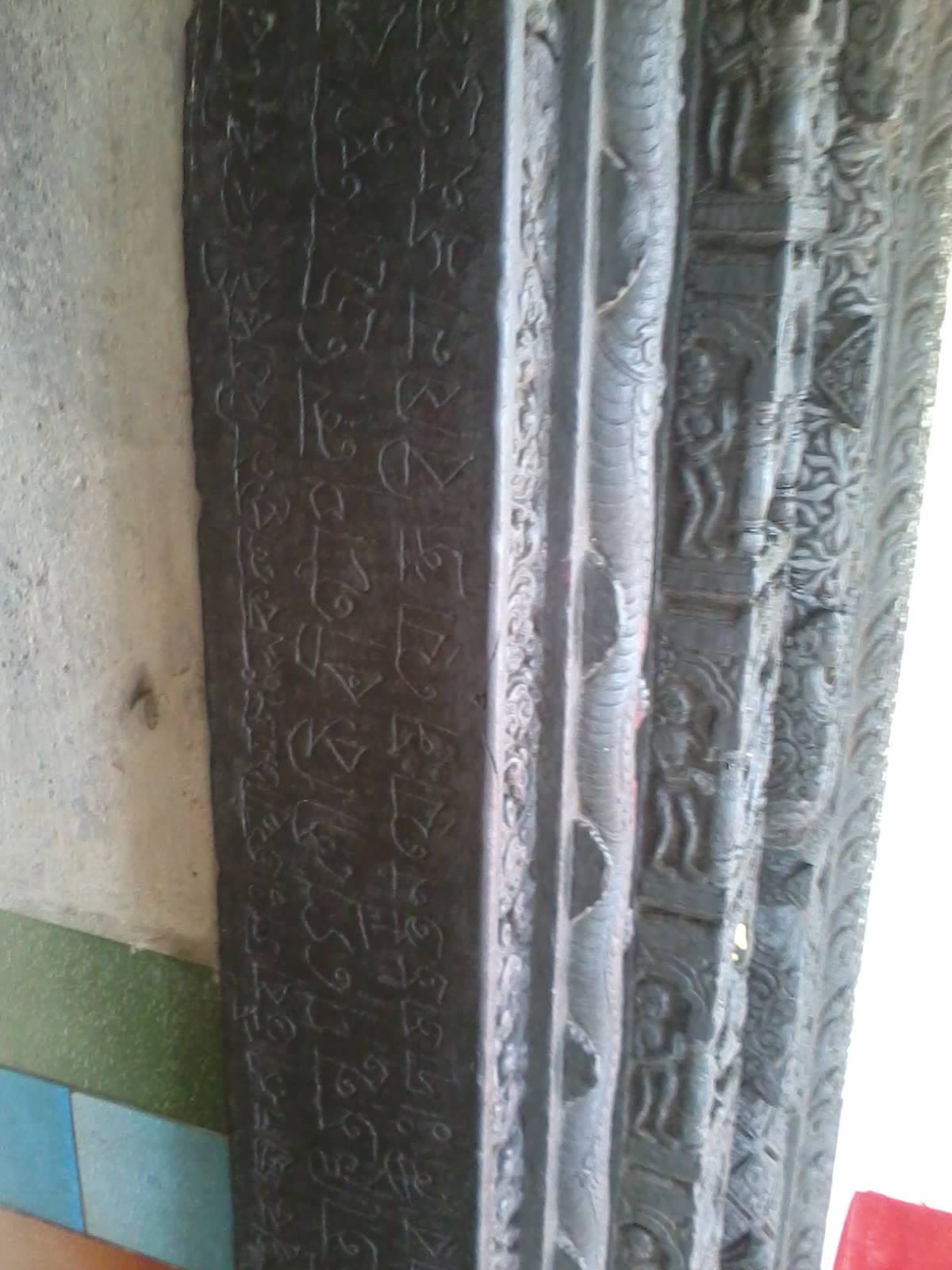|
Bhairavasimha
Bhairavasimha ( Maithili: भैरव सिंह) was the fourteenth king of the Oiniwar Dynasty in the Mithila Kingdom. He ascended the throne of the kingdom around 1475 - 1476 CE after the ''King Dhirasimha''. Early life Bhairavasimha was born in the royal family of the Oiniwar Dynasty in the Mithila Kingdom. He was the son of the ''King Narasimha''. He was a Maithil Brahmin and belonged to Kashyap Gotra. Rule According to George Grierson, the King Bhairavasimha shortly after taking the control on the throne of the kingdom, declared the kingdom of Mithila as independent sovereign state. He issued silver coins to declare the independent sovereign status of the Mithila Kingdom. After the King Shivasimha, he was the second king of the Oiniwar Dynasty in Mithila who issued sovereign silver coins of the Mithila Kingdom to declare its independent sovereignty. He established his capital at a village known as '' Varuar'' in the ''Bachhaur pargana''. Bhairavasimha was a pol ... [...More Info...] [...Related Items...] OR: [Wikipedia] [Google] [Baidu] |
Maithili Language
Maithili () is an Indo-Aryan language spoken in parts of Languages of India, India and Languages of Nepal, Nepal. It is native to the Mithila region, which encompasses parts of the Indian states of Bihar and Jharkhand as well as Nepal's eastern Terai. It is one of the 22 Eighth Schedule to the Constitution of India, officially recognised languages of India and the second most spoken Languages of Nepal, Nepalese language in Nepal. The language is predominantly written in Devanagari, but there were two other historically important scripts: Tirhuta script, Tirhuta, which has retained some use until the present, and Kaithi script, Kaithi. Official status In 2003, Maithili was included in the 8th Schedule, Eighth Schedule of the Indian Constitution as a recognised language of India, Indian language, which allows it to be used in education, government, and other official contexts in India. Maithili language is included as an optional paper in the Union Public Service Commission, UP ... [...More Info...] [...Related Items...] OR: [Wikipedia] [Google] [Baidu] |
Videha
Videha ( Prākrit: ; Pāli: ; Sanskrit: ) was an ancient Indo-Aryan tribe of north-eastern South Asia whose existence is attested during the Iron Age. The population of Videha, the Vaidehas, were initially organised into a monarchy but later became a (an aristocratic oligarchic republic), presently referred to as the Videha Republic, which was part of the larger Vajjika League. Location The borders of the Videha kingdom were the Sadānirā river in the west, the Kauśikī river in the east, the Gaṅgā river in the south, and the Himālaya mountains in the north. To the west of the Sadānirā river, the neighbour of the Vaidehas was the kingdom of Kosala. The Sadānirā and Kauśikī rivers remained the respective western and eastern boundaries of the later Videha republic, although its territory covered only the northern part of that of the former Videha kingdom, with the latter hence being called Mahā-Videha ("greater Videha"). The Videha republic was located al ... [...More Info...] [...Related Items...] OR: [Wikipedia] [Google] [Baidu] |
King Narasimha
Narasimha ( Maithili: नर सिंह) was the twelfth king of the Oiniwar Dynasty in the Mithila Kingdom of the Indian subcontinent. He ruled the kingdom around 1453 CE. He ascended the throne of Mithila Kingdom after the ''King Harisimha''. Early life Narasimha was born in the royal family of the Oiniwar Dynasty in Mithila. His was the son of the King Harisimha. He was a Maithil Brahmin and belonged to Kashyap Gotra In Hindu culture, the term gotra (Sanskrit: गोत्र) is considered to be equivalent to lineage. It broadly refers to people who are descendants in an unbroken male line from a common male ancestor or patriline. Generally, the gotra .... Later life Narasimha was married to the woman scholar ''Dhiramati.'' He had three sons. References {{India-royal-stub Indian monarchs Mithila History of Mithila ... [...More Info...] [...Related Items...] OR: [Wikipedia] [Google] [Baidu] |
Hinduism
Hinduism () is an Indian religion or ''dharma'', a religious and universal order or way of life by which followers abide. As a religion, it is the world's third-largest, with over 1.2–1.35 billion followers, or 15–16% of the global population, known as Hindus. The word ''Hindu'' is an exonym, and while Hinduism has been called the oldest religion in the world, many practitioners refer to their religion as '' Sanātana Dharma'' ( sa, सनातन धर्म, lit='the Eternal Dharma'), a modern usage, which refers to the idea that its origins lie beyond human history, as revealed in the Hindu texts. Another endonym is ''Vaidika dharma'', the dharma related to the Vedas. Hinduism is a diverse system of thought marked by a range of philosophies and shared concepts, rituals, cosmological systems, pilgrimage sites, and shared textual sources that discuss theology, metaphysics, mythology, Vedic yajna, yoga, agamic rituals, and temple building, among other topi ... [...More Info...] [...Related Items...] OR: [Wikipedia] [Google] [Baidu] |
Maithil Brahmin
Maithil Brahmins are a Hindu Brahmin community from the Mithila region of the Indian subcontinent that comprises Tirhut, Darbhanga, Kosi, Purnia, Munger, Bhagalpur; Bokaro in Jharkhand and Santhal Pargana divisions of India and some adjoining districts of Nepal. They are one of the five Pancha-Gauda Brahmin communities. The main language spoken by Maithil Brahmins is Maithili. History Some of the dynastic families of the Mithila region, such as the Oiniwar Dynasty and Khandwal Dynasty (Raj Darbhanga), were Maithil Brahmins and were noted for their patronage of Maithil culture. In the 1960s and 1970s, the Maithil Brahmins became politically significant in Bihar. Binodanand Jha and Lalit Narayan Mishra emerged as prominent political leaders of the community. Under the Chief Ministry of Jagannath Mishra many Maithil Brahmins assumed important political positions in Bihar. Divisions According to the Vedic ''Samhita'', Maithil Brahmins are divided into the Vajasaneyi ... [...More Info...] [...Related Items...] OR: [Wikipedia] [Google] [Baidu] |
Kashyapa
Kashyapa ( sa, कश्यप}, ) is a revered Vedic sage of Hinduism., Quote: "Kasyapa (Rudra),(Vedic Seer)..." He is one of the Saptarishis, the seven ancient sages of the ''Rigveda''. Kashyapa is the most ancient and venerated rishi, along with the other Saptarishis, listed in the colophon verse in the ''Brihadaranyaka Upanishad''. Kashyapa is an ancient name, referring to many different personalities in the ancient Hindu and Buddhist texts. The place Kashmir is named after him, as well as numerous other Sanskrit texts and Indian scriptures. Name Kashyapa means "turtle" in Sanskrit. According to Michael Witzel, it is related to Avestan ''kasiiapa'', Sogdian ''kyšph'', New Persian ''kašaf'', ''kaš(a)p'' which mean "tortoise", after which Kashaf Rūd or a river in Turkmenistan and Khorasan is named. Other relations include to Tokarian B ''kaccāp'' ("brainpan"), Tokarian A ''kāccap'' ("turtle", "tortoise"). Frits Staal agrees that Kaśyapa means tortoise but believe ... [...More Info...] [...Related Items...] OR: [Wikipedia] [Google] [Baidu] |
Gotra
In Hindu culture, the term gotra (Sanskrit: गोत्र) is considered to be equivalent to lineage. It broadly refers to people who are descendants in an unbroken male line from a common male ancestor or patriline. Generally, the gotra forms an exogamous unit, with marriage within the same gotra being regarded as incest and prohibited by custom. The name of the gotra can be used as a surname, but it is different from a surname and is strictly maintained because of its importance in marriages among Hindus, especially among castes. Pāṇini defines ''gotra'' as ''apatyam pautraprabhrti gotram'' (IV. 1. 162), which means "the word ''gotra'' denotes the descendance (or descendants), ''apatya'', of a couple consisting of a ''pautra'', a son and a ''bharti'', a mother, i.e. a daughter-in-law." (Based on Monier Williams Dictionary definitions.) When a person says "I am Vipparla-gotra", he means that he traces his descent to the ancient sage Vipparla by an unbroken male descen ... [...More Info...] [...Related Items...] OR: [Wikipedia] [Google] [Baidu] |
George Abraham Grierson
Sir George Abraham Grierson (7 January 1851 – 9 March 1941) was an Irish administrator and linguist in British India. He worked in the Indian Civil Service but an interest in philology and linguistics led him to pursue studies in the languages and folklore of India during his postings in Bengal and Bihar. He published numerous studies in the journals of learned societies and wrote several books during his administrative career but proposed a formal linguistic survey at the Oriental Congress in 1886 at Vienna. The Congress recommended the idea to the British Government and he was appointed superintendent of the newly created Linguistic Survey of India in 1898. He continued the work until 1928, surveying people across the British Indian territory, documenting spoken languages, recording voices, written forms and was responsible in documenting information on 179 languages, defined by him through a test of mutual unintelligibility, and 544 dialects which he placed in five languag ... [...More Info...] [...Related Items...] OR: [Wikipedia] [Google] [Baidu] |
Bhaur Gram
Bhaur Gram ( Maithili: भौर ग्राम) is a historical village in the Madhubani district of the Mithila region in Bihar, India. It is the birthplace of the founder King Mahesha Thakura of the Khandwala Dynasty in Mithila. The King Mahesha Thakura established the first capital of his kingdom at Bhaur Gram. It is one of the major villages in the Mithila region for the residence of the Maithil Brahmins. History The historian ''Makhan Jha'' in his book "''Anthropology of Ancient Hindu Kingdoms''" mentioned that ''Pandit Shripati Thakur'', the grandfather of the King Mahesha Thakura received some favours from the ''Bharajitiya Rajputs'' of Mithila. Then Shripati Thakur settled at the village of Bhaur in Mithila. The village of Bhaur is the '' moolgram'' of the ''Kharore Bhaur'' clan in the Maithil Brahmins of the Shandilya Gotra. Geography Bhaur village is at a distance of 17 miles from the city of Darbhanga in North-East direction. Similarly it is at a distance of 7 ... [...More Info...] [...Related Items...] OR: [Wikipedia] [Google] [Baidu] |
Sri Lanka
Sri Lanka (, ; si, ශ්රී ලංකා, Śrī Laṅkā, translit-std=ISO (); ta, இலங்கை, Ilaṅkai, translit-std=ISO ()), formerly known as Ceylon and officially the Democratic Socialist Republic of Sri Lanka, is an island country in South Asia. It lies in the Indian Ocean, southwest of the Bay of Bengal, and southeast of the Arabian Sea; it is separated from the Indian subcontinent by the Gulf of Mannar and the Palk Strait. Sri Lanka shares a maritime border with India and Maldives. Sri Jayawardenepura Kotte is its legislative capital, and Colombo is its List of cities in Sri Lanka, largest city and financial centre. Sri Lanka has a population of around 22 million (2020) and is a multinational state, home to diverse cultures, languages, and ethnicities. The Sinhalese people, Sinhalese are the majority of the nation's population. The Tamils, who are a large minority group, have also played an influential role in the island's history. Other long establ ... [...More Info...] [...Related Items...] OR: [Wikipedia] [Google] [Baidu] |



